October in the garden
Amazing grasses, the best autumn flowers and what you should be doing in the garden as it winds down
Hello everyone. This is my monthly garden diary post, free for everyone to read, and hopefully to keep you on track as to what you should be doing in your own gardens at this time of year. For paid subscribers checking in for the current series on cottage garden planting, I’ll be posting again next week.
I’m back from a week’s holiday to find the garden still very much in the game. The trees are already turning but flowers spill out from every border. Cosmos and dahlias are in full flow, and the salvias are only just getting going after the dry summer. Paintbrush splashes of gold (rudbeckias), old rose (sedums) and damson (asters) add layers of colour to a backdrop of golden grasses, and it is these grasses that hold everything together. Feathery Stipa tenuissima dances round the front garden, while Calamagrostis ‘Karl Foerster’ stands sentry at the back.
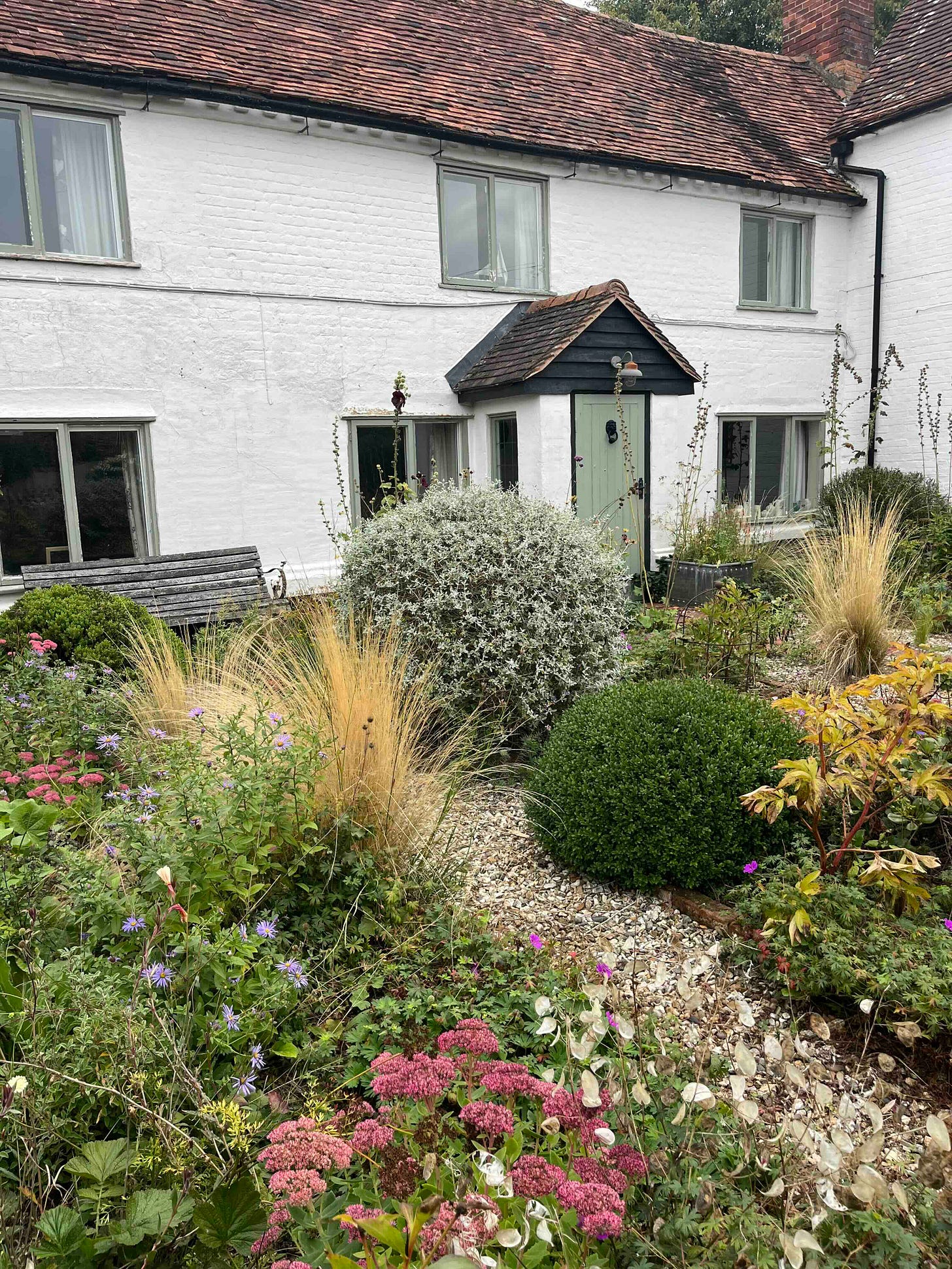
Some people are funny about ornamental grasses - perhaps because they aren’t traditional herbaceous border plants. But I wouldn’t be without them, particularly at this time of year when they come into their own. Typically they are really low maintenance and easy to grow, many of them thrive in full sun and quite poor soils, and they give the garden a naturalistic feel as well as bringing movement into the borders. Here are some of my favourites.
Calamagrostis acutiflora ‘Karl Foerster’: A tall, statuesque grass with an upright habit and feather-light plumes, lending structure and movement to the garden. It really has three-season interest and is completely bullet proof, lasting for years. I use it repeated through most of the borders in the back garden.
Calamagrostis brachytricha: I have grown this grass for the first time this year from seed. Smaller than Karl Foerster, it has lovely, long flowerheads that start off smoky-pink and fade to a biscuity beige, held above lush green foliage.
Miscanthus ‘Malepartus’: Bold and architectural, this miscanthus has rich pinky-red plumes in late summer, turning reddish brown in autumn and finally silver through winter. It forms large, dramatic clumps over a metre wide and can reach over two metres tall. Long lasting and robust, it keeps its shape until it is cut back in early spring.
Molinia caerulea ‘Transparent’:
Not as winter-proof as some of the other grasses in my garden, this subtle grass produces neat mounds of bright green foliage that turns ochre-yellow in autumn. Above the leaves, delicate wand-like stems with wispy rust-coloured flowers rise up in late summer and autumn to catch the breeze and rays of softening light. Out of all the grasses mentioned here, molinias prefer a damper soil.
Pennisetum macrourum: I don’t have this in my garden - yet - but I have been yearning for it after seeing it in Dan Pearson’s garden near Bath. You need quite a lot of space for it, which I don’t quite have at the moment. It has slender, silvery white wands that arch outwards from a sizeable mound of greenery. Airy and upright, it adds elegance and movement, blending beautifully into meadows or more relaxed planting palettes
.
Stipa gigantea: This is a stalwart in my garden, with two giant ones taking a prominent place in the main border at the back of the garden, plus others elsewhere. Their fabulous tall stems explode into inflorescences of finely spun gold. I’m looking out at them now on a dull day, and they are gently moving in the breeze, standing out against the evergreen hedge behind. When the sun comes out, they literally make the border glow.
Anemanthele lessoniana: These final two grasses are suitable for shade as well as sun - while the others prefer full sun. Anemanthele or pheasant’s tail grass has narrow graceful fronds that turn shades of red, yellow and copper in autumn. I find it really useful for the bed under the oak tree which is in dry soil and dappled shade.
Hakonechloa macra: This Japanese grass is incredibly versatile, growing easily in sun or shade. It forms cascading mounds of luminous green, turning buttery gold as the seasons shift. I haven’t tried this in my own garden but planted in a friend’s garden where it threads around the edge of a woodland border.
If you want a more detailed post on ornamental grasses, here’s one I wrote a couple of years ago.
The best flowers to take you into autumn
There was a silver lining to the drought we had this summer: it held so many things back, and now they are flowering profusely. The dahlias and cosmos are amazing at the moment, and the rudbeckias have bounced back from a mass of shrivelled stems and leaves. The salvias, of course, are flowering away beautifully, especially the pink Salvia involucrata, and the tiny purple Salvia ‘Violetta’. One of my asters, the tall Doellingeria umbellata, hasn’t liked the drought and has faded very early, but the bullet proof Symphiotrichum turbinellum is looking absolutely splendid with its vivid purple-blue flowers. And the sedums are the brightest pink I’ve ever seen them. Here’s a gallery of the floral fireworks of the moment.
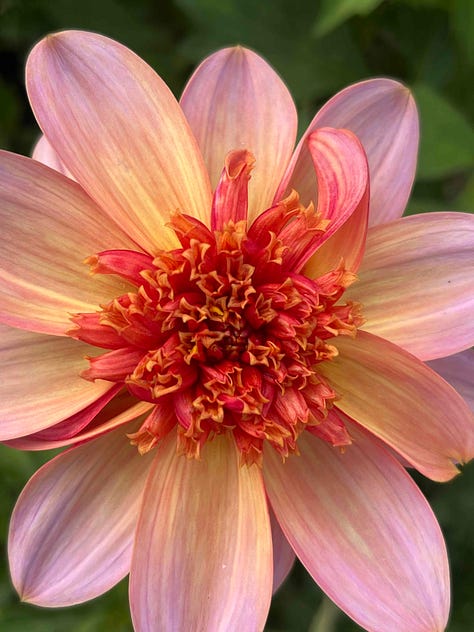
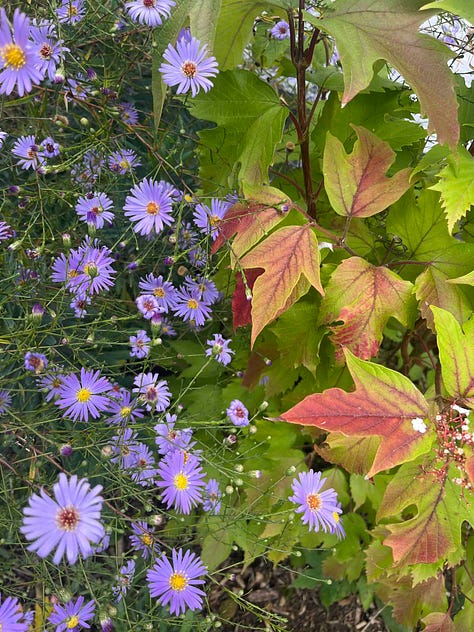



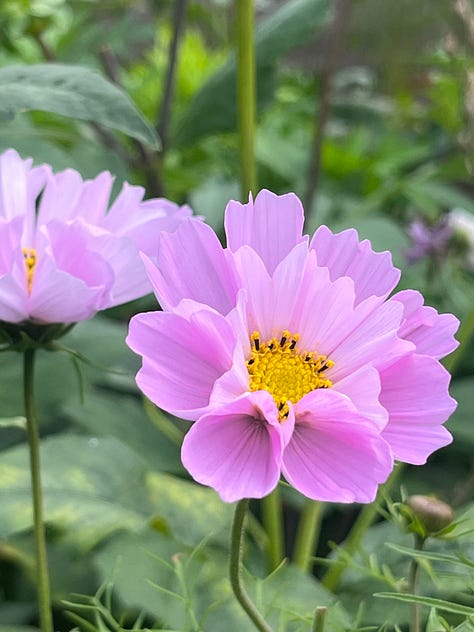
Garden tasks for October
Saving dahlia seeds: I am increasingly obsessed with growing my own dahlias from seed, and have a devoted place in my vegetable garden for them. Earlier flowering cut flowers can also be planted in the same plot, and I might even plant some tulips there this year too. Rather than using all the dahlias for cut flowers, I’m leaving some to go to seed so I can collect it for planting next spring. It’s easy to do this, but you have to let them dry and mature for as long as possible on the plant, and if the weather is relentlessly wet as it was last year, this can be difficult. If the weather gets wet, snip off the seed heads into paper bags and take them indoors to finish drying. Read more about my seed grown dahlias here.
Taking cuttings: I have just taken cuttings of all my salvias and penstemons, both of which can be tender or short-lived. Taking cuttings means that you have new stock in the wings for next year - and for both these plants, taking softwood cuttings is easy as pie - watch a video here.
Planting bulbs: I try to add to my bulb collections every year so I’ll be planting more alliums in the borders, and narcissus ‘Thalia’ under the willow. Tulips can wait a little longer - I usually plant these in November when the weather and soil is cooler. I also plant up small terracotta pots with miniature bulbs each year, and these take pride of place on the table outside the kitchen windows in February, when I’m always desperate to see signs of life. Choose jewel-like Iris reticulata, delicate species tulips or miniature narcissus - see this post from last year for more inspiration on bulbs for pots.
Clearing and composting: By now, the borders will be in slow retreat. Many perennials begin to collapse, though some — like rudbeckia and sedum — maintain their upright form and provide valuable structure through the early frosts. I always resist the urge to tidy too swiftly. Seed heads are not only beautiful, catching mist and early frost like filigree, but they also provide food for birds and shelter for overwintering insects. I pick through the borders and cut back selectively in short bursts, piling the waste on the compost or chopping and dropping directly on the soil around the plant.
Dividing and rejuvenating: The soil is still warm, and autumn rains help settle in new plants. It's an ideal time to lift and divide overgrown perennials. This not only invigorates the plants, but provides you with more to dot through the garden or share with friends. I’ve been waiting for some good rain to soak the beds before I dig up some of my existing beds for division and a spot of rearranging - and that rain has now come, so I’ll be out there this weekend.
Spraying box plants: According to box expert Karel Goosens, we should all be spraying our box plants with Xentari between October 10-15, to prevent the emergence of box caterpillars in spring. The precise dates are important because apparently the lifecycle of the moth and larvae is dependent not on temperature but on day length, and these calculations have been made by Karel after years of observation and experience. I posted about this earlier this week but in case you missed it, read more about it here.
Enjoy your weekend!
Clare x


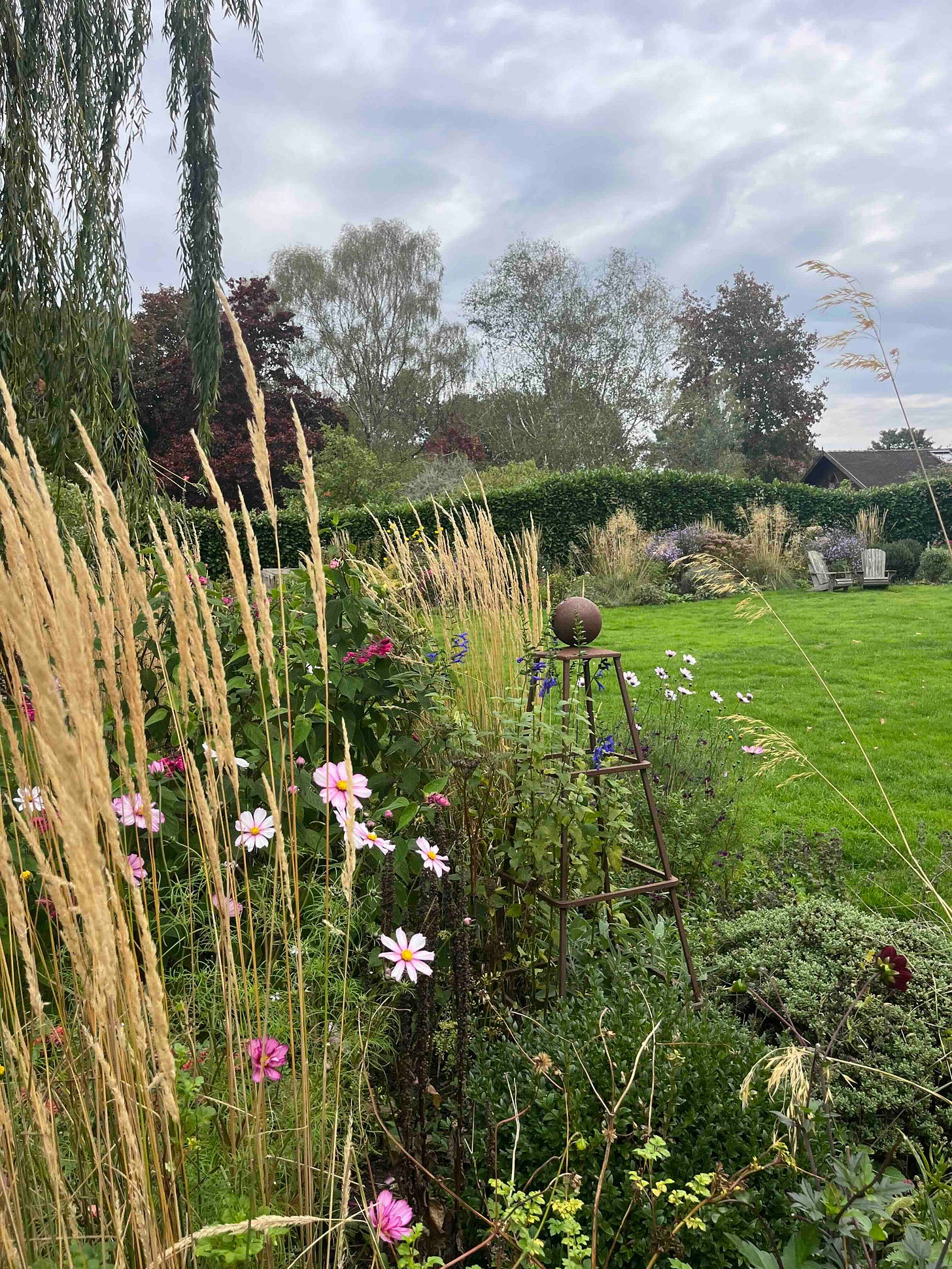
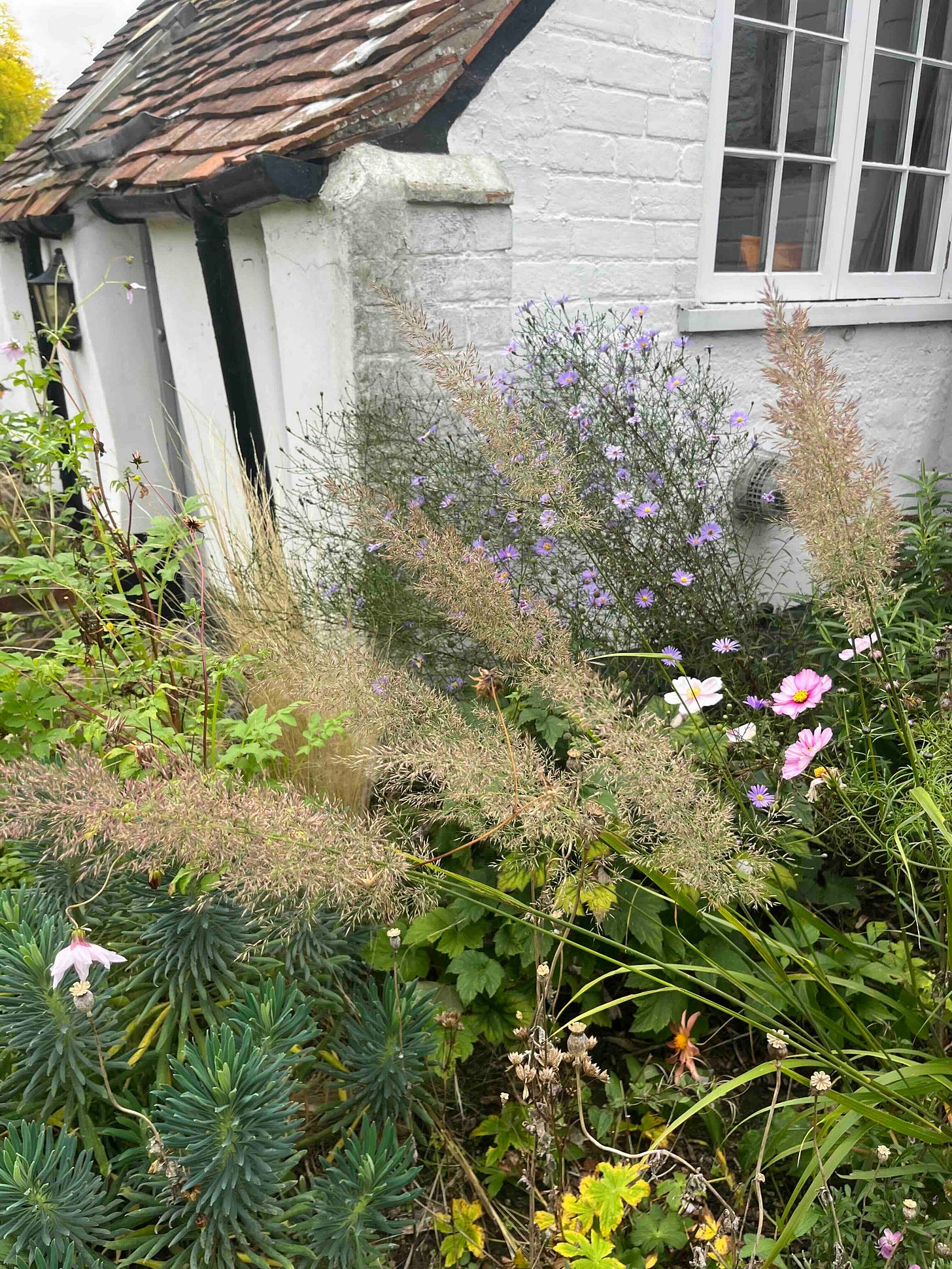
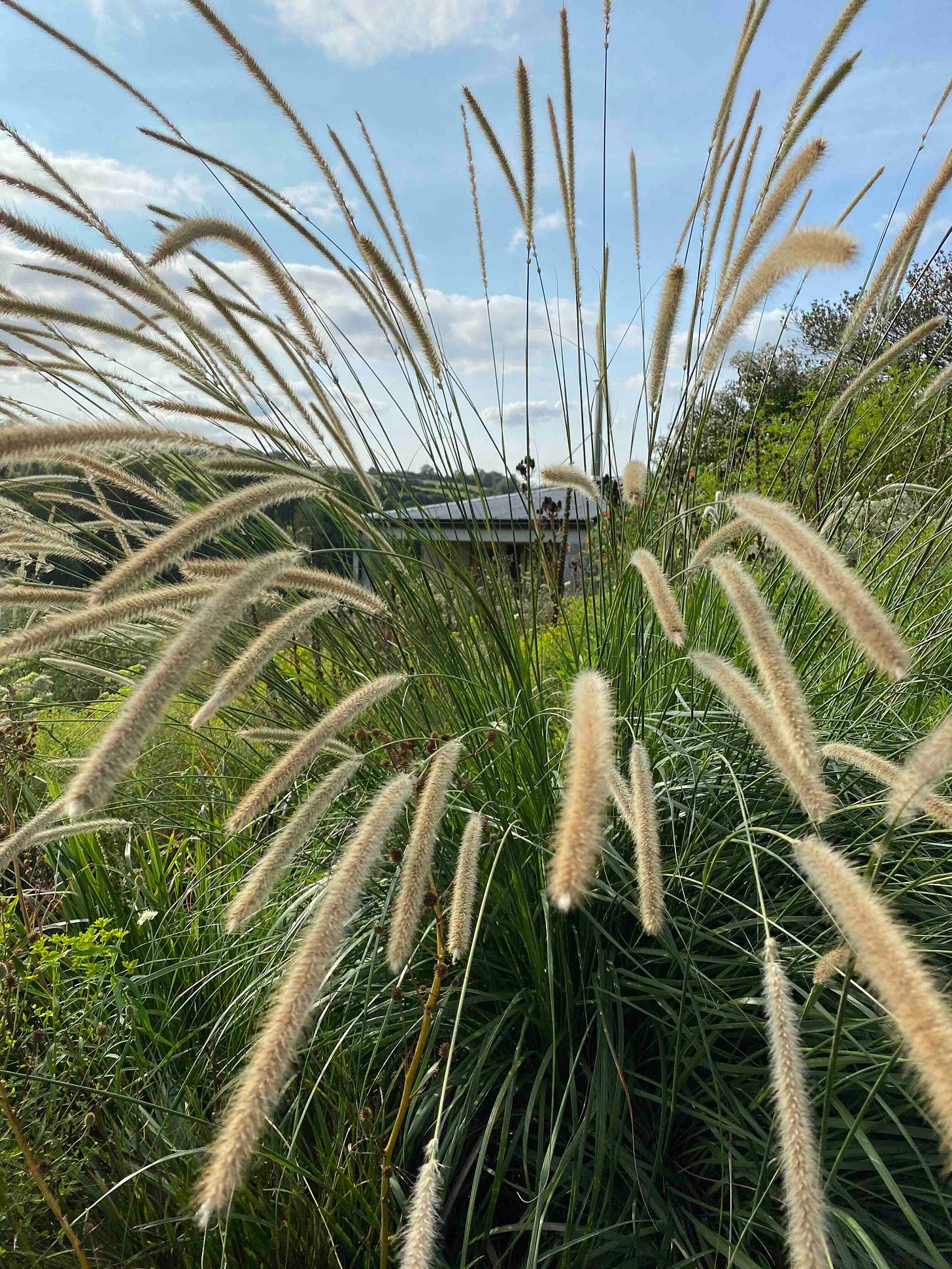



What a comprehensive and beautiful October list! I've just started getting into Substack and am so glad I found your writing
Love your inspiration reads, especially since my outdoor gardens are now moving indoors to my tiny greenhouse 🌱